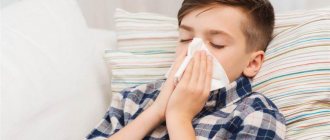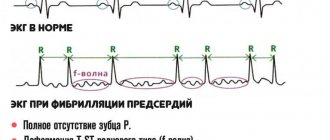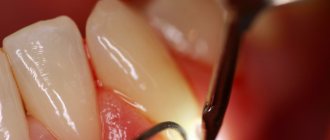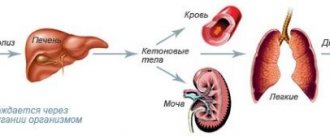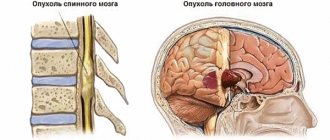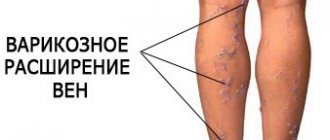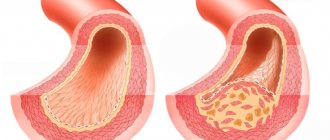Sleep apnea syndrome manifests itself in periodic and fairly frequent pauses in breathing that occur during sleep. The condition is seriously dangerous. In this case, there is drowsiness during the day, decreased ability to work and suppressed immunity. In addition, the risk of heart attack, stroke, increased blood pressure and the development of heart pathologies increases. If you start treating apnea in a timely manner at home, then such undesirable changes can be avoided.
What is apnea?
Literally, the term “apnea” from Greek means a complete absence of breathing.
Sleep apnea is characterized by episodes of stopping breathing movements during sleep for at least ten seconds. In one night, such repetitions can occur more than 300 times. This condition in itself does not cause concern. For example, professional swimmers can hold their breath for more than 3 to 5 minutes. An ordinary person can boast a result of more than 35 - 45 seconds. But frequent episodes of sleep apnea over time can lead to serious consequences, and in some cases even fatal. This disease occurs in 5% of the male population and 2% of the female population. The frequency of pathology correlates with age. Representatives of the fair sex are most susceptible to manifestations of apnea during menopause. Healthy people may experience physiological apnea - a state of short-term (less than ten seconds) pauses in breathing, no more than five times in one hour. There is a concept of “false” apnea, which occurs when the skin is overly irritated, for example, when immersed in ice water.
The term “hypopnea” is quite close, which characterizes a decrease in respiratory flow by at least 30% of the norm, which leads to a decrease in the saturation of various tissues and organs with oxygen (O2) by more than 4 - 5%.
Choking according to Loff's Dream Book
Choking – Many people with sleep apnea gasp while they sleep. During deep sleep, the muscles of the tongue relax and it sinks, blocking the flow of air, which leads to difficulty and cessation of normal breathing, but it should be noted that people suffering from apnea do not have dreams of suffocation more often than others.
Choking in a dream means experiencing some serious changes or deprivations.
What caused the choking - did you choke on food or did they try to strangle you? The source of food or the food itself are symbols of the changes you are going through. If you choked on a hot dog, Dr. Freud will help you find an interpretation. If someone strangled you, why? Perhaps you are threatening your strangler, or, conversely, he is depriving you of what you need, interfering with the effectiveness of your actions at home, at work, or in other settings.
Types of apnea
According to the mechanism of development, sleep apnea is divided into:
- central shape. Stopping breathing occurs because the brain at a certain time, for one reason or another, stops sending impulses to the muscles (diaphragm, muscles of various parts of the respiratory tract) that are responsible for the respiratory process. Since the muscles do not contract, the act of breathing does not occur, but then resumes again within 10 - 20 seconds; in some cases, the pause can reach 2 - 2.5 minutes. The central form in medical practice is a rather rare condition. An important aspect of this type is that patients are able to remember the moments of their awakening;
- obstructive form. It is formed if the supply of air is interrupted by occlusion (narrowing of varying degrees) of the lumen of the respiratory tract. Impulses from the central nervous system and the activity of the respiratory muscles remain intact. Stopping breathing is accompanied by a significant decrease in oxygen levels and in order to restore the respiratory process, a person needs to wake up for a few seconds. These moments are so short-lived that the patient simply cannot remember them. Often only close relatives indicate this. These attacks are repeated regularly - from 5 to 25 times throughout sleep, but can reach 300 - 500 times. Obstructive sleep apnea syndrome (OSA) is much more common than the central form;
- mixed option. It is a combination of the first two types.
The most dangerous is the mixed form, as it has been noted that it significantly increases the risk of cardiovascular disaster - the occurrence of strokes and heart attacks.
According to the severity, apnea syndrome is divided depending on the number of episodes of respiratory arrest occurring during sleep:
- absence of syndrome - from 5 to 15;
- mild degree - from 15 to 30;
- medium - from 30 to 60;
- severe - over 60.
In addition, a number of authors classify obstructive sleep (night) apnea as a respiratory dysfunction, among which the following syndromes are also present:
- pathological snoring;
- hypoventilation - a steady decrease in lung ventilation and blood oxygen saturation;
- obesity-hypoventilation (Pickwick) - a violation of gas exchange in people with excess body weight;
- combined obstruction of the respiratory tract is a patency disorder that occurs at the level of the pharynx and bronchi (lower and upper sections), accompanied by hypoxemic conditions.
Features of breathing during sleep in adults and children
Breathing is necessary to maintain the life of the body.
It is divided into external and fabric. The first directly fills the lungs with clean air and removes waste air. The second saturates organs and tissues with oxygen. Both types are related. Adults and children have their own characteristics in the act of breathing. A child's nasal passages are formed at the age of 3 years. The mucous membrane in them is thin, and when slight swelling occurs, nasal congestion occurs very quickly.
The maxillary sinuses develop by age 14. This structure is the cause of hyperplasia of the pharyngeal tonsil, stenosing laryngitis. Babies' breathing is superficial and abdominal. After 6-7 years, in girls it turns into breastfeeding.
The respiratory rate of an adult is 16-18 per minute. In women during pregnancy, the body needs to reduce diaphragmatic movements, so chest breathing predominates. The abdominal type is observed in men.
Who is at risk?
It includes:
- people of the older age group (over 60 years old). With age, the soft tissues of the pharynx may lose their former elasticity, which can lead to airway obstruction;
- representatives of the stronger sex. Scientists explain this condition by a difference in the level of the hormone progesterone;
- patients who abuse drugs from the group of sedatives, hypnotics, tranquilizers (Clonazepam, Diazepam, Normoson, Somnol, Alprozalam, etc.);
- persons suffering from overweight (obesity). Episodes of nocturnal respiratory arrest occur in 30–75% of cases. The lumen of their airways narrows significantly, the functional activity of the lung tissue is weakened, which is accompanied by attacks of apnea;
- patients with endocrine diseases - acromegaly (due to increased production of growth hormone - somatotropin, pathological enlargement of certain parts of the body occurs), autoimmune thyroiditis, endemic goiter, conditions after removal of the thyroid gland or part of it (these cases are accompanied by hypothyroidism, which can lead to respiratory dysfunction);
- persons suffering from alcoholism. Episodes of obstructive apnea are 15 times more common in them;
- people with deformities of the pharynx, nose, soft or hard palate;
- patients suffering from muscle weakness, which can be caused by various diseases or by a lack of magnesium or calcium.
Main reasons
During sleep, muscle tension decreases, which promotes strong relaxation of the pharyngeal wall. Often apnea occurs due to anomalies and diseases in the structure of the upper respiratory tract, such as:
- polyps;
- previous nasal septum fractures;
- the presence of infectious diseases in the respiratory tract;
- incorrect jaw structure;
- too flaccid muscles of the palate;
- obesity;
- alcohol abuse;
- overeating before bed;
- smoking;
- short, thick neck (there is a relationship between neck circumference and the likelihood and severity of OSA).
Sleep apnea often occurs in patients with acromegaly or irreversible hyperthyroidism. The specific structure of the male throat also contributes to the problem.
Symptoms
Symptoms of this pathology can be divided into two large groups - night and day. The first include:
- constant awakenings accompanied by a feeling of lack of air;
- heavy, intermittent snoring;
- interruptions in breathing noted by a person nearby;
- sweating during sleep;
- the urge to urinate at night (a person’s physiological sleep is not interrupted);
- possible increased heart rate;
- sleep is restless and does not bring a feeling of rest and freshness.
Daytime symptoms are similar to those of nervous disorders and include:
- increased irritability;
- inability to concentrate;
- severe drowsiness, which prevents you from performing work or household chores;
- absentmindedness;
- memory impairment;
- headaches, especially in the morning;
- feeling depressed;
- decreased attraction to the opposite sex;
- unreasonable weight gain.
People suffering from sleep apnea syndrome are statistically ten times more likely to get into accidents.
What are the risks of sleep apnea?
Holding your breath during sleep is a rather dangerous problem that requires immediate assistance from specialists. Its consequences may be:
- decreased sexual activity. The genital organs are among the first to suffer from lack of oxygen. A decrease in their blood supply and severe drowsiness and fatigue lead to erectile dysfunction;
- disturbance in the heart rhythm. Due to oxygen deficiency, the heart muscle may temporarily lose its automatic functions, which leads to the development of various arrhythmias;
- increased blood pressure - in response to a lack of O2, the heart pumps blood at an increased rate (often spasmodic), which can ultimately lead to organ failure;
- increased risk of stroke or myocardial infarction, which are life-threatening conditions that affect the heart muscle and brain;
- sudden cardiac arrest. Sleep apnea has been linked in recent studies to one of the causes of death in children under two years of age;
- depressive disorder. Lack of quality sleep leads to loss of strength, apathy, depression, unwillingness to live, suicidal tendencies and other severe manifestations of depression.
Over the age of 50, the presence of sleep apnea syndrome doubles the risk of death.
Choking according to Stuart Robinson's dream book
Choking in a dream - in real life something always stops you, preventing you from achieving your final goal? What is choking you in a dream - perhaps the dream means that you are speechless. That you (or the person being strangled) are trying to express something, but it is extremely difficult for you. It is also important to take into account what surrounds you in your sleep and understand what exactly is suffocating you.
Is it the place you live in, the people you associate with, or your way of thinking? If you are the only person who is choking, are those around you trying to relieve you of this? Or do they stand back and just watch? In other words, do others help you express what you want to say?
Choking in a dream is also a sign that something has stopped developing in your life. Perhaps you abandoned the project because you realized that your expectations were too high. When you are filled with emotions, you experience love or sympathy, you may feel suffocated - perhaps such a dream indicates that something in real life has hurt your feelings.
Diagnostics
If a person experiences sleep apnea, the causes and treatment of this disease are identified and carried out by the following specialists:
- somnologist;
- otorhinolaryngologist;
- surgeon;
- traumatologist;
- neurologist;
- therapist.
In order to clarify the diagnosis, in addition to characteristic complaints, use:
- polysomnography, which is carried out throughout the night's rest. It gives the necessary insight into the process and quality of sleep of a particular patient. The level of blood oxygen saturation, muscle activity, breathing patterns, heart and brain function, and eye movements are recorded. This study also helps to establish the severity of the disease, which is very important for subsequent treatment;
- video and audio recording of sleep status to assess external respiration and the presence of snoring;
- electroencephalogram - a method of recording the activity of various areas of the brain;
- pulse oximetry - determination of oxygen saturation of arterial blood;
- electromyography - a study that helps to identify disorders in the functioning of skeletal muscles;
- electrocardiography - the study of potentials emanating from the heart muscle;
- oxycapnography - allows you to evaluate gas exchange disorders during night rest;
- rhino-, pharyngo-, laryngoscopy to identify pathology of the ENT organs;
- determination of thyroid hormone levels.
How to treat apnea?
A mild degree of the disease can be corrected by drug therapy, which includes herbal components - Silence, Doctor Snoring, etc.
These products have low effectiveness and some side effects, so before using them, consultation with a competent specialist is required.
The “gold standard” for the treatment of moderate and severe apnea syndrome has long been considered the use of CPAP machines, which allow maintaining constant positive pressure in the upper respiratory tract. The essence of the method: during a night's rest, you need to wear a mask that covers the mouth or nasal opening, through which the device will supply a constant air flow. This procedure prevents apnea or hypopnea, prevents the collapse of soft tissues, and reduces the risk of stroke and heart attack by 40% and 20%, respectively. Possible side effects:
- noise in ears;
- headache;
- discomfort when using a mask;
- stomach ache.
Currently, a more modern method of treating sleep apnea syndrome is being introduced by stimulating the hypoglossal nerve, which is responsible for the muscles of the larynx. The newest system was implanted in thirty patients with moderate to severe apnea. It is worth noting that the manifestation of the disease and normalization of breathing was detected in all subjects without exception. The only disadvantage of the study is ignorance of the long-term consequences of using this method.
Surgical treatment methods include:
- tonsillectomy. It involves removing enlarged tonsils that interfere with normal breathing;
- uvulopalatopharyngoplasty - removal of excess tissue of the soft palate with possible removal of the uvula;
- adenoidectomy - removal of a pathologically enlarged posterior pharyngeal tonsil;
- introduction of the Pillar system - the introduction of special implants into the tissue of the soft palate, making it more rigid. This prevents it from collapsing and blocking the airways. But this method has proven itself more in the treatment of snoring, which often accompanies this disease;
- bariatric surgery - the method is aimed at combating excess body weight and boils down to removing part of the stomach and installing a special device into it. The goal is to reduce the amount of food consumed;
- tracheostomy - performed in extremely rare cases and comes down to making an incision in the trachea below the site of obstruction and installing a special breathing tube into the resulting hole.
Alternative treatments include:
- moistening the mucous membranes of the nose and throat with a weak solution of salt water before resting at night;
- instillation of sea buckthorn oil into the nasal passages;
- drinking freshly squeezed cabbage juice with honey before bed;
- singing is the most pleasant and simple way that helps strengthen the muscular apparatus of the respiratory tract;
- yoga - some of the exercises, for example: you need to push your tongue forward, then lower it to your chin, hold in this position for two to four seconds, while applying some effort. You need to repeat these movements about 30 times in the morning and before resting at night.
Home methods
Treatment of apnea at home is possible through the use of alternative medicine recipes. It is recommended to drink a glass of freshly squeezed cabbage juice every evening before going to bed. To improve the taste, you can add a small amount of bee honey. The treatment is complemented by eating carrots baked in the oven.
You can independently ease your breathing and prevent the development of the characteristic sound by using sea buckthorn oil. Every evening for a couple of months the nasal passages are treated with the product. It is noticed that breathing becomes freer and easier, the man sleeps better, and nightmares stop tormenting him.
There are more radical folk methods, for example, sewing several wine corks to your pajamas, sewing a pocket on the back and putting a small ball in it. The method will not allow a man to sleep on his back, and will force him to roll over back onto his side.
Latest information: Snoring treatment device
A saline solution also helps if you use it to rinse your nose. Means:
- moisturizes the mucous membrane;
- reduce swelling;
- will minimize snoring.
To prepare the solution, take a teaspoon of sea salt and dissolve it in a glass of boiled warm water.
An excellent method of treatment would be to use a decoction of peppermint, lemon balm, and yarrow. The medicinal mixture is drunk 15 minutes before bedtime. The duration of treatment depends on the severity of the disorder.
Cabbage with honey helps against snoring. You need to take 3 fresh cabbage leaves, grind them into pulp, add 100 ml of warm boiled water, a couple of small spoons of honey. The mixture is infused for 3 hours under a closed lid, taken a small spoon every evening before bed.
To obtain the maximum therapeutic effect, it is recommended to use all of the listed methods in combination.
How to avoid sleep apnea?
To avoid the manifestations of such a rather serious pathology, you need to use a number of simple rules:
- achieve excess weight loss. This step is one of the most important and should be completed as early as possible;
- stop drinking alcohol and smoking, especially 4-6 hours before bedtime;
- avoid the use of tranquilizers, sleeping pills and sedatives;
- try to sleep on your left side, this will relieve the load on the muscles of the pharynx and diaphragm.
To improve the quality of your night's rest:
- you must stop watching TV and using various gadgets 2 hours before bedtime;
- dim bright light sources as much as possible;
- avoid stressful situations.

